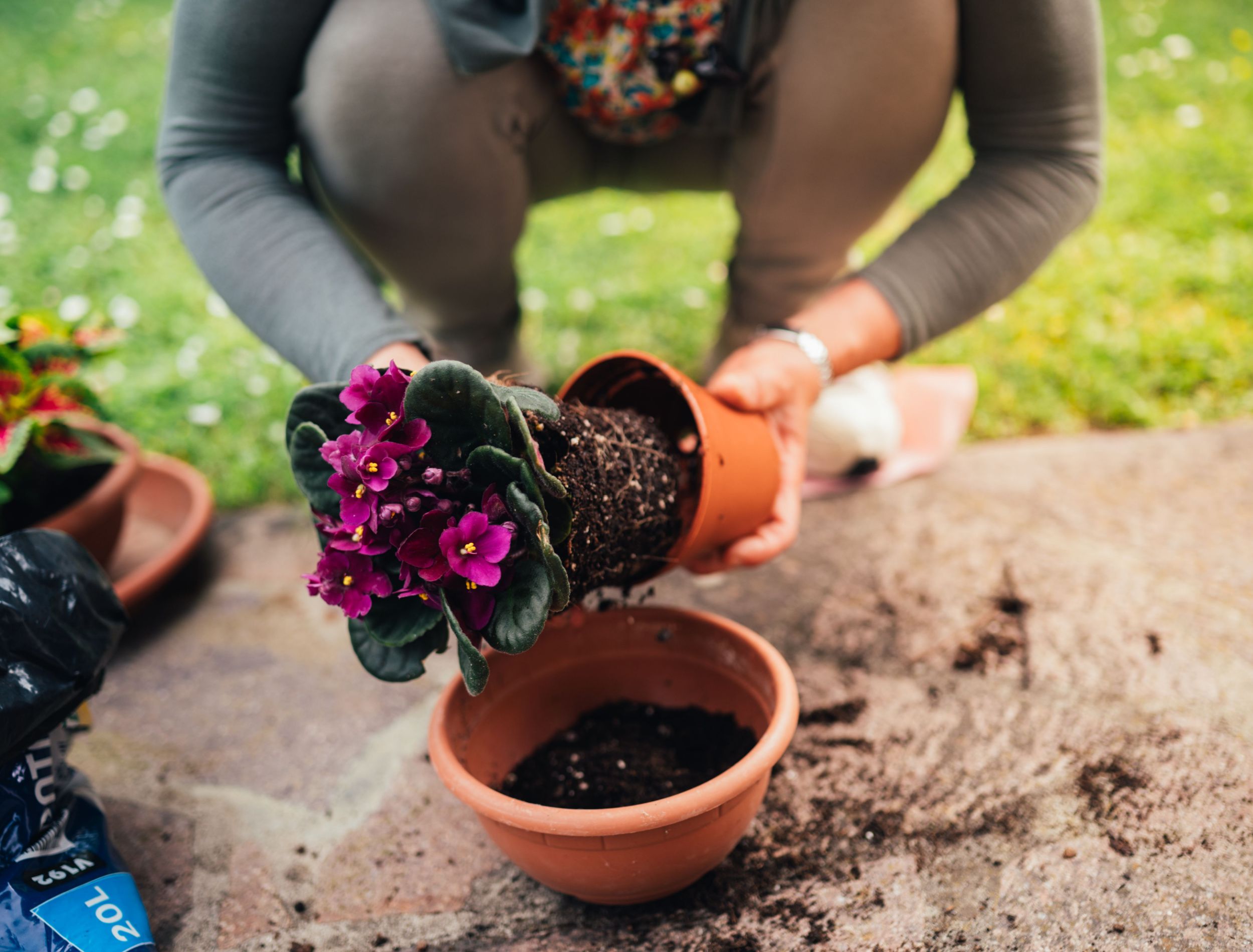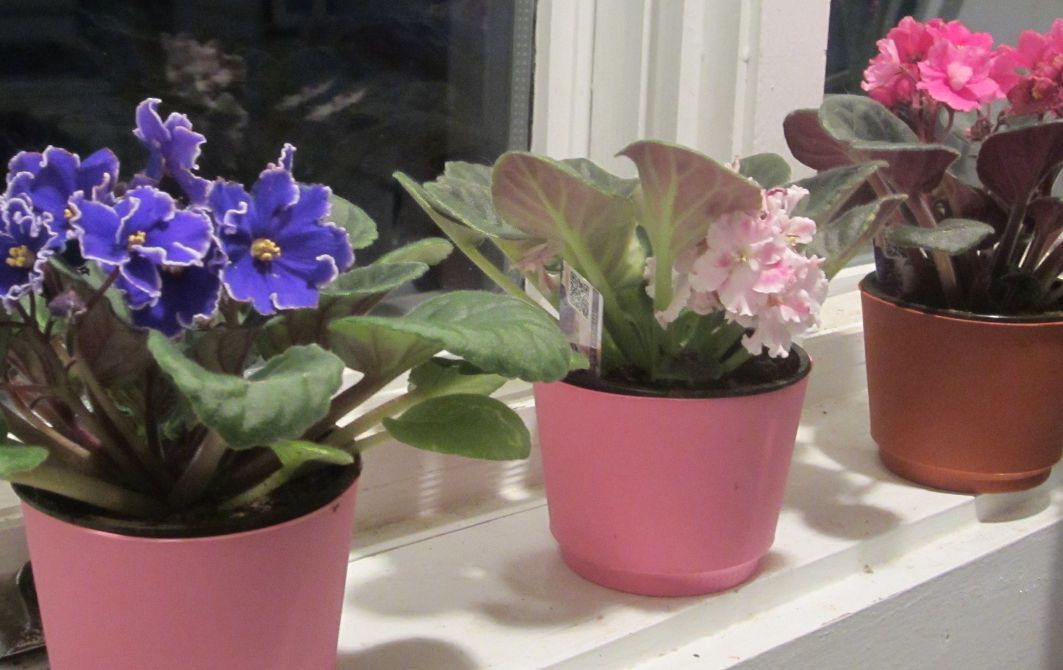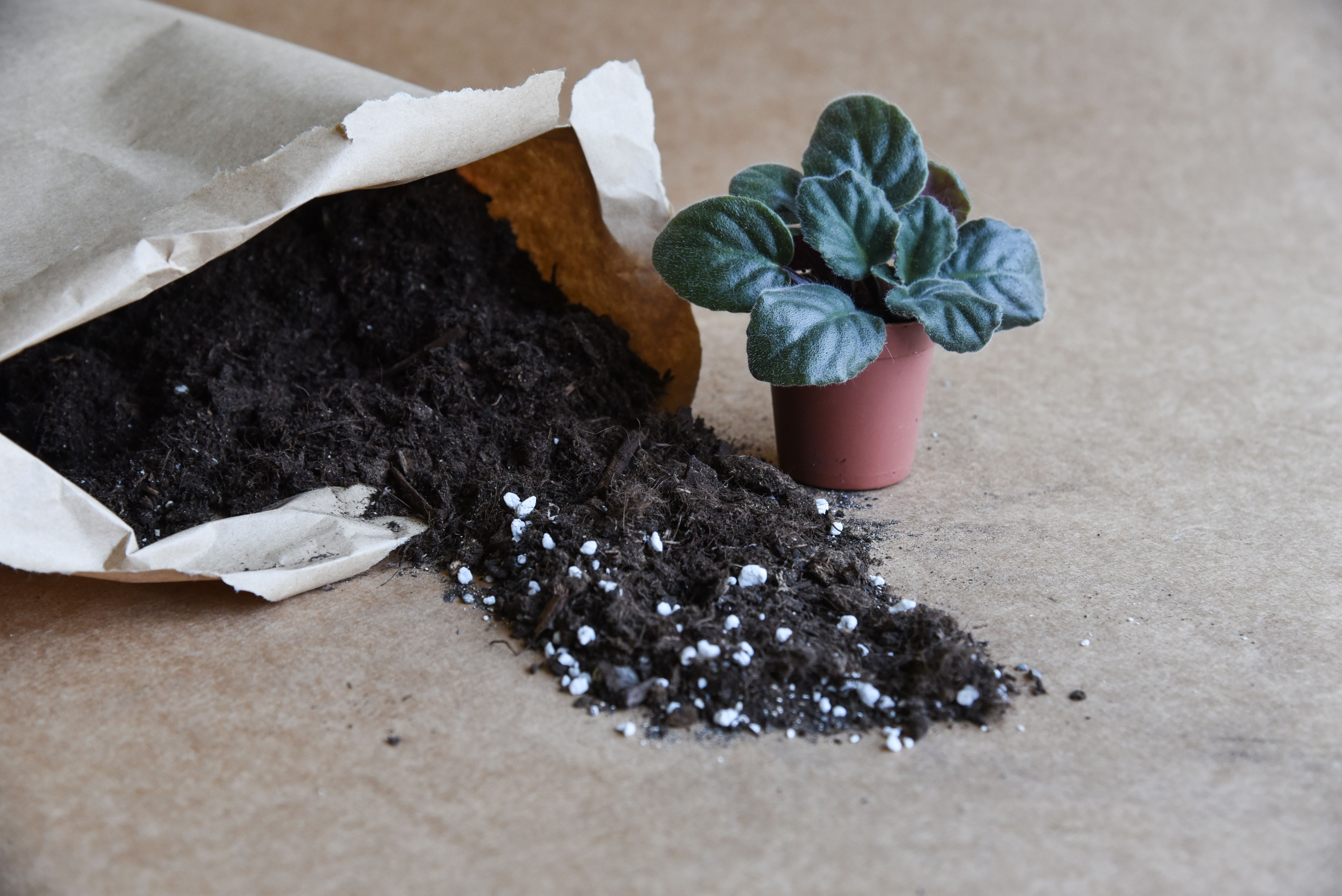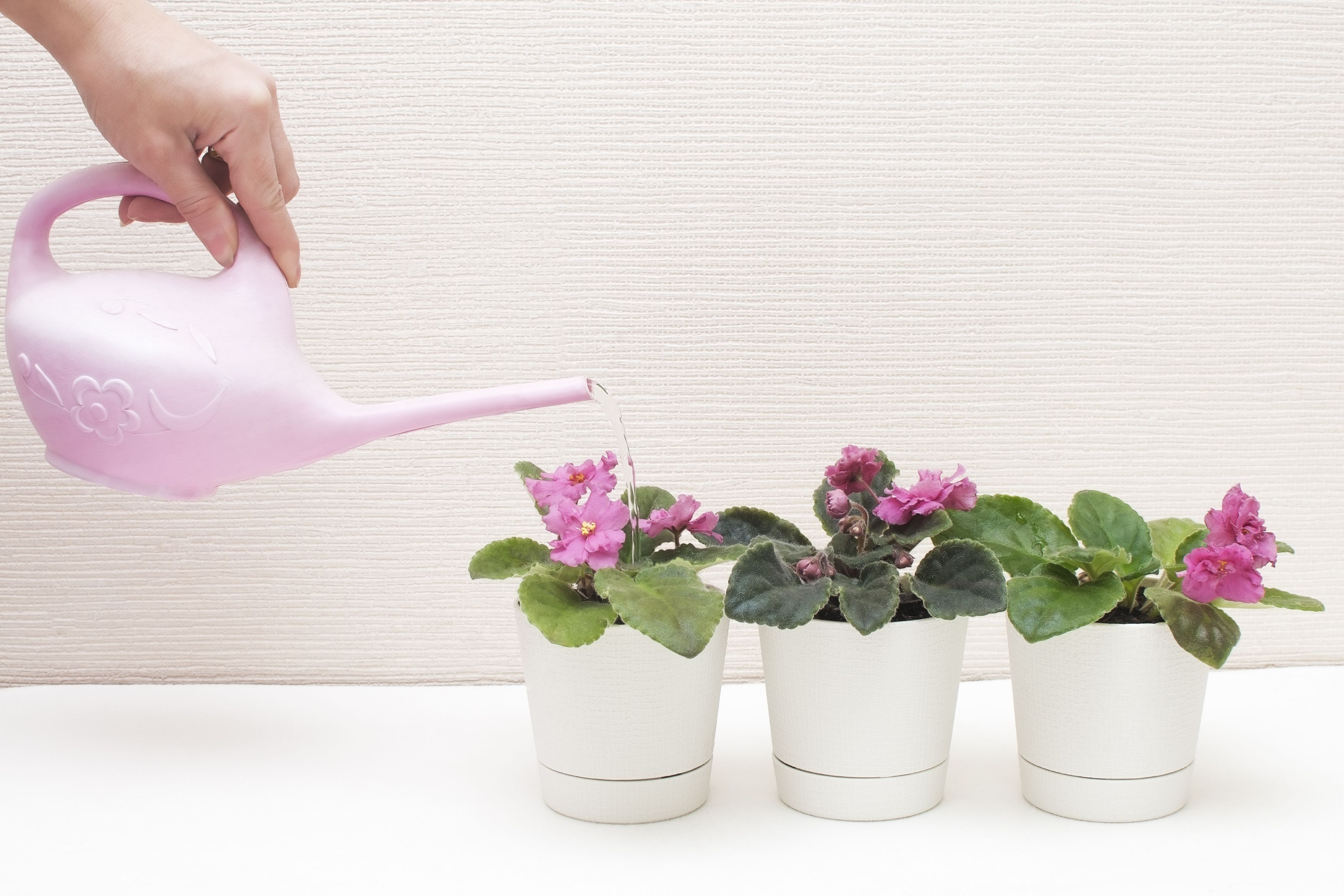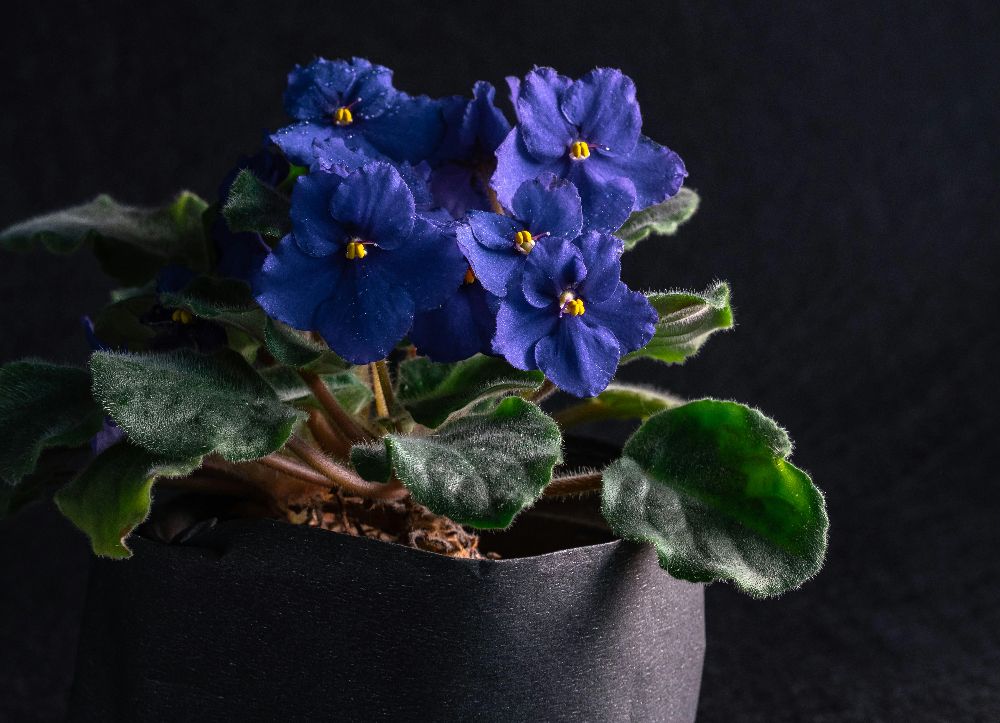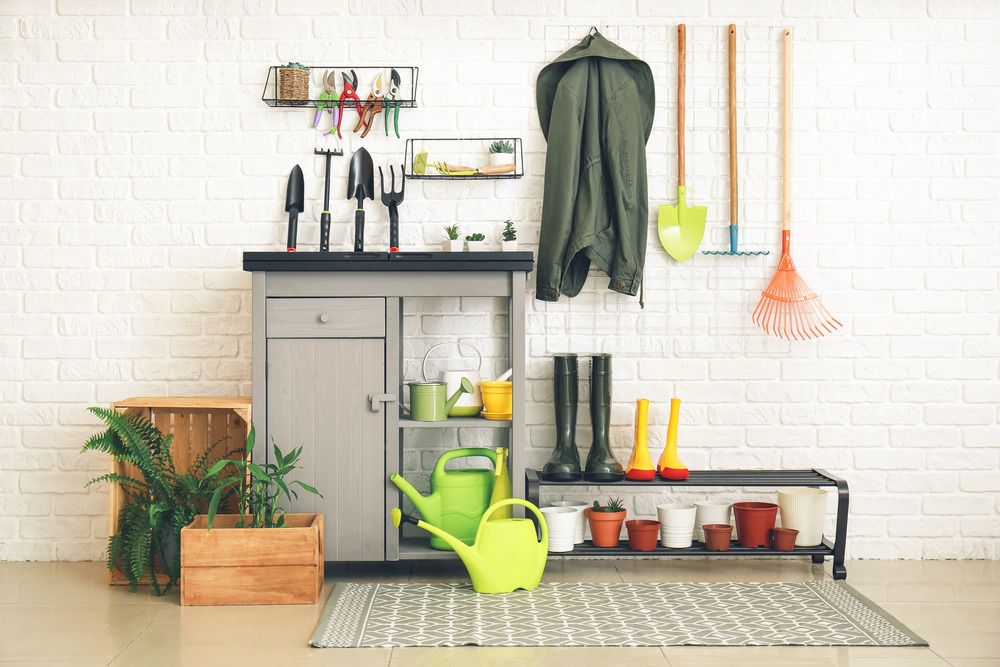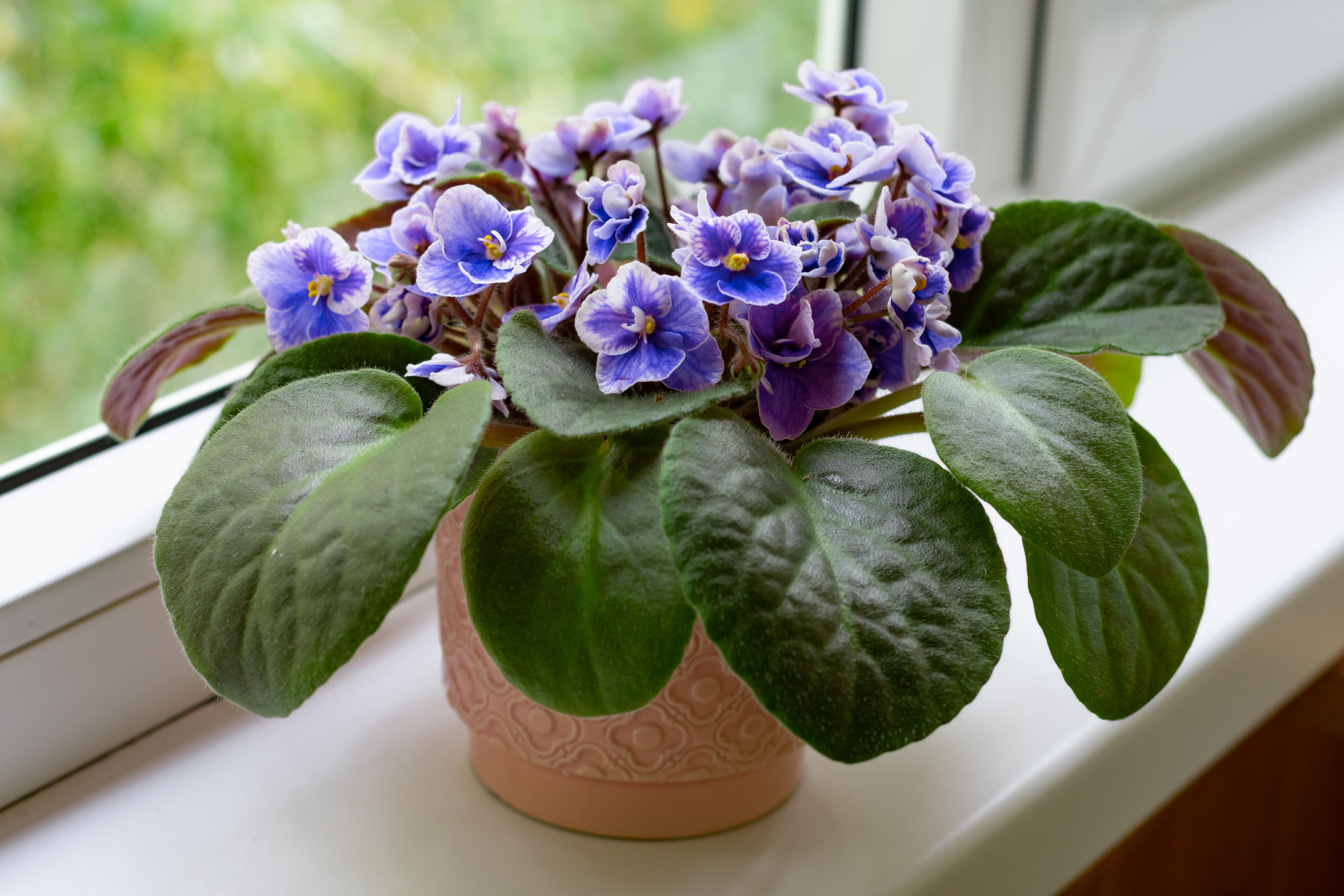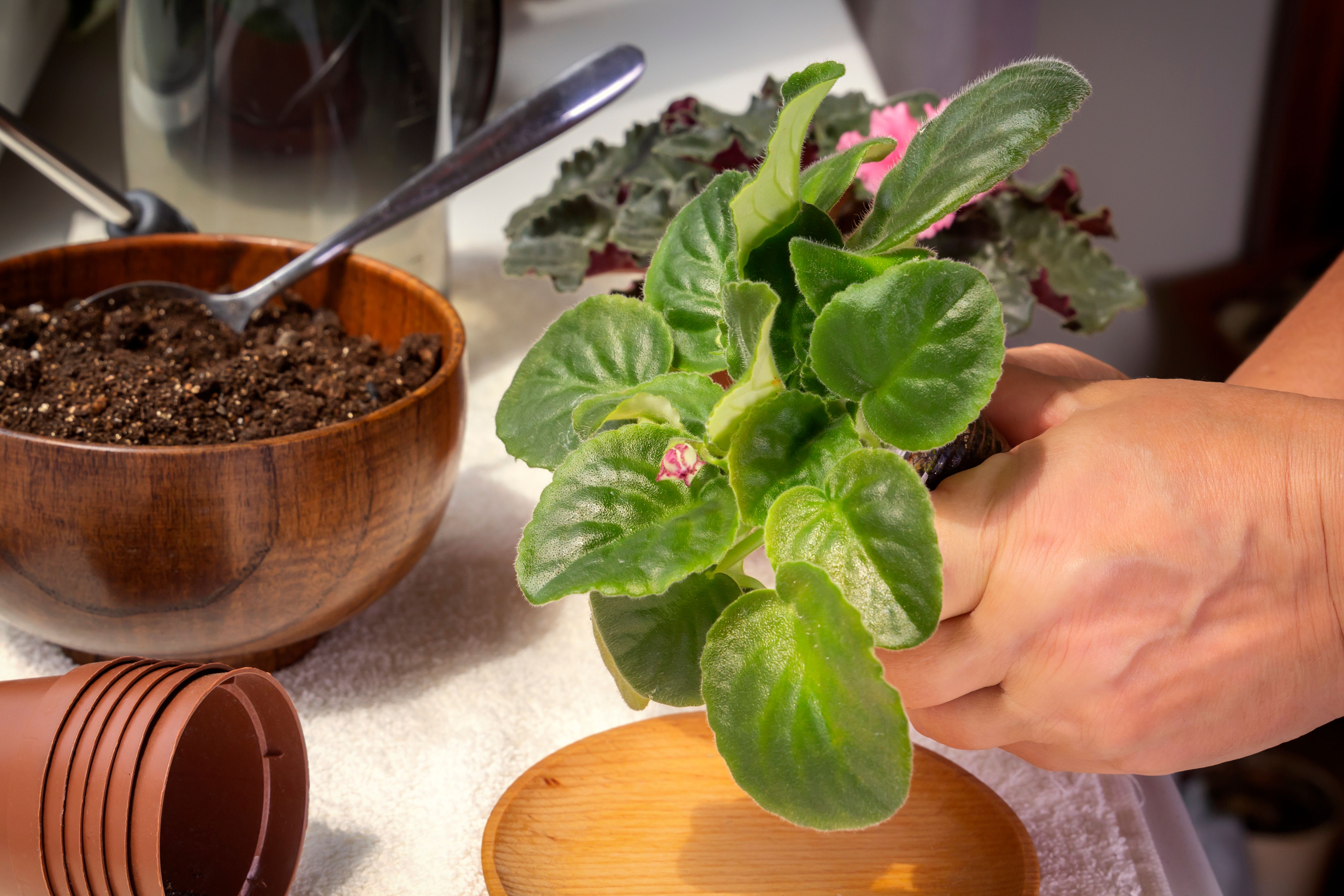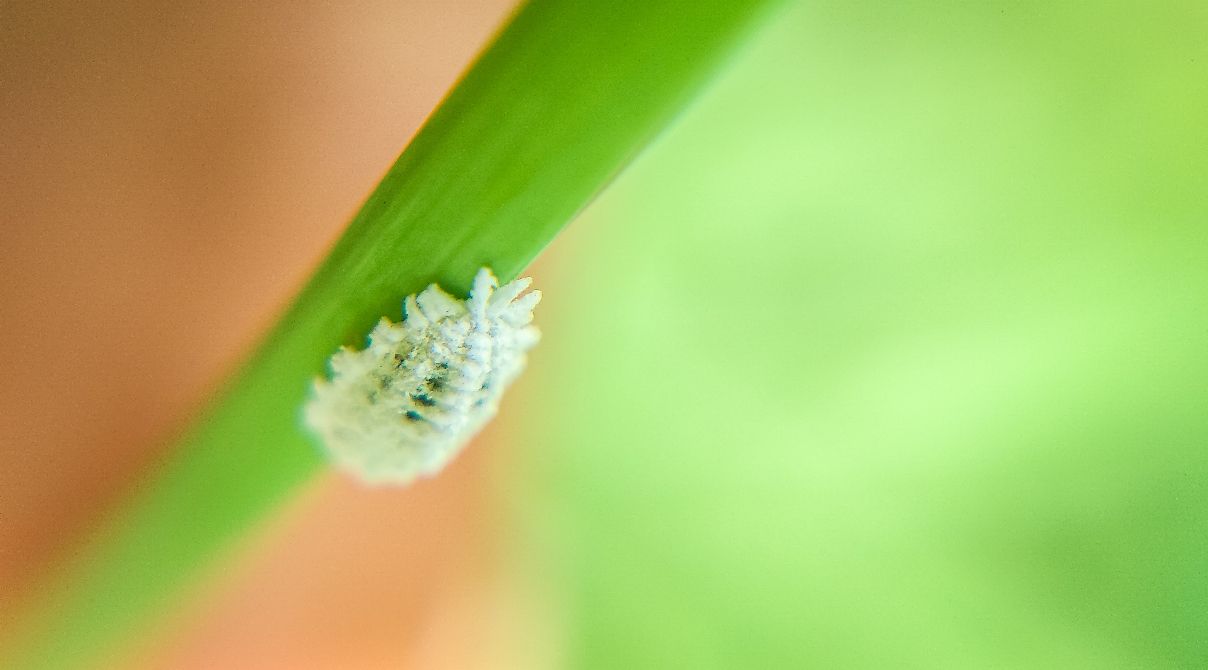Key Takeaways
- African violets require 14 to 16 hours of light and 8 hours of darkness for proper blooming.
- Use a well-draining potting mix to prevent root rot. Mix peat, perlite, vermiculite, and dolomite lime to achieve a pH of 6.0 to 7.0.
- Water African violets regularly, keeping the potting mix moist but not soggy. Avoid using softened water as it can damage the plants.
African violets (plants in the Saintpaulia genus) are classic houseplants, and for good reason. They come in a variety of stunning colors and generally grow well with only basic care. While they are relatively easy to grow, you can help your African violets reach their full potential and remain trouble-free by following some fundamental tips on their soil, water, and fertilizing needs. African violets don't handle temperature or lighting extremes well, but if you can meet their needs, they'll reward you with beautiful, long-lasting flowers.
Whether you're new to growing African violets or have been growing them for years, explore tips to help ensure your plants can thrive for years.
1 African Violet Need Both Daytime and Nighttime Lighting
To bloom well, African violets require alternating light and darkness
African violets require 14 to 16 hours of light and at least eight hours of darkness for proper blooming. The Smithsonian recommends placing African violets about eight to 12 inches below two 40-watt fluorescent lamps.
Alternatively, you can place plants in windows with strong but indirect sunlight, such as those that face the north, northwest, or northeast. Some people opt to move their African violet to a southern-facing window during the winter as sunlight is weaker and less direct during winter months.
|
Signs Your African Violets Need More Light |
Signs Your African Violets Need Less or Less Intense Light |
|---|---|
|
Long narrow leaves |
Leaves look pale or even bleached |
|
Few, if any, blooms |
Leaves show signs of scorching |
|
Dark leaves |
Plant is overly compact with slow growth |
|
Long but weak leaf stems |
2 Use a Well-Draining Potting Mix
Don't let your plant's roots sit in water
A well-draining potting mix is essential for African violets as they have delicate roots vulnerable to root rot. You can make your own potting mix or buy a specialized African violet one. To make your own, mix:
- 1 part peat or peat substitute
- 1 part perlite
- 1 part vermiculite
- Enough dolomite lime to bring the pH to between 6.0 and 7.0
The University of Minnesota Extension notes that even when using a specialized African violet potting blend, you may still want to add an equal amount of perlite to the mix to maximize aeration and drainage.
3 Water African Violets Regularly
African violets need constant moisture
Keep your African violet's potting mix moist, but never allow it to become soggy, as that can result in root rot. Distilled room-temperature water or rainwater is best. If you use tap water, leave it out overnight so that any chlorine can burn off before you water your plants. The exact amount of water necessary will vary depending on the size of the container and the potting mix used.
Using a Wicking System to Water Your African Violets
Wicking systems can help ensure the soil stays consistently moist. Here's how to set it up.
- Use braided nylon as a wick.
- Put one end of the wick into a dish of water.
- Thread the other end of the wick through the plant's drainage hole.
- The wick will transfer water from the dish to the plant's soil, providing consistent moisture.
Don't water your African violets from overhead — water can damage the leaves and cause leaf spots. When watering the plants, make sure you are carefully avoiding the leaves and are only wetting the soil.
Using softened water can damage your African violets, because it contains soluble salts.
4 Fertilizer Is Important for Blooms
Using the right amount of fertilizer is essential
African violets benefit from regular fertilizing during the growing season. If you are growing the plants with only natural light, you can forgo fertilizing during the winter. The Smithsonian recommends fertilizing African violets every time you water them by including a balanced liquid fertilizer (20-20-20) mixed into the water. Make sure you're using enough water to dilute the fertilizer to ½ strength or weaker. The fertilizer could burn the plant's delicate roots if you don't dilute it enough.
Alternatively, the Cornell Cooperative Extension suggests monthly applications of a high phosphorus fertilizer (12-36-14) to encourage blooming.
Regardless of the fertilizer method, never apply diluted fertilizer to dry soil, which could cause root burn. Instead, make sure the soil is already moist before adding the fertilizer.
The first number on a fertilizer label refers to nitrogen (N), the second to phosphorus (P), and the third to potash or potassium (K).
5 Flush African Violets Monthly
Don't let salt build up and harm your plant
African violets can be vulnerable to a build-up of fertilizer salts, so flush your plant's soil monthly.
- Put your plant and its container in a sink or tub. (You can also do this outside during the summer.)
- Pour plain distilled water into the plant's soil from the top, avoiding leaves.
- Keep pouring water until it runs freely out of drainage holes in the bottom of the container.
If your plant develops rust-colored leaves, flush immediately, as this can signify fertilizer damage.
If your plant develops rust-colored leaves, flush immediately, as this can signify fertilizer damage.
6 African Violets Thrive at Room Temperature
Drafts can devastate African violets
|
Minimum Temperature |
Maximum Temperature |
Humidity |
|
|---|---|---|---|
|
African Violets |
60 degrees Fahrenheit |
80 degrees Fahrenheit |
40 to 60 percent |
Part of what makes African violets such good houseplants is their ability to thrive at room temperature. The plants are sensitive to sudden changes in temperature and humidity, so be sure you don't expose them to drafts. Sudden temperature changes can be an issue for plants growing on window sills. You may want to place paper or another barrier between the plant and the window at night.
7 Repot African Violets Annually
The right size and type of pot helps your plant flourish
You should repot your African violets yearly to give them fresh potting mix and limit fertilizer build-up.
- Choose a pot with a diameter of ⅓ or less of the plant's leaf span.
- Use a mix of peat, vermiculite, perlite, and dolomite.
- Make sure the plant's crown (where the roots meet the shoots) is slightly above the soil level.
Clay pots can cause fertilizer build-up. Either avoid using unglazed clay pots for African violets or clean those pots regularly in an overnight mix of three parts water to one part vinegar.
8 Watch for Bugs on Your African Violets
Pests on houseplants can be challenging to control
|
Signs |
Treatment |
|
|---|---|---|
|
Mealybugs |
Cotton-like eggs, ¼ inch bugs, yellow leaves |
Insecticidal soap or cotton swab dipped in a mix of equal parts water and rubbing alcohol to kill bugs and eggs |
|
Green or black ⅛ inch insects, yellow leaves |
Insecticidal soap or Neem oil |
|
|
Webs, brown or yellow spots, barely visible red spiders |
Insecticidal soap |
|
|
Cyclamen mites |
Stunted plants, mites too small to see |
Discard plant to stop spread |
|
Thrips |
Leaf damage, brown dots on leaves, the bugs themselves are barely visible |
Insecticidal soap |
Be sure to gently wipe off any soap or water used to remove pests, as African violets are sensitive to having wet leaves.
If you believe pests have infested one of your plants, move it away from other plants to stop the spread of the insects.
There's a good reason African violets are one of the most popular houseplants in America. Between their beautiful flowers, distinctive leaves, and relatively simple care needs, these plants can thrive in many households. You can also propagate them by division and share them with family and friends, making them a gift that truly keeps giving. Caring for your African violet can ensure this long-blooming plant will fill your home with color and beauty.

